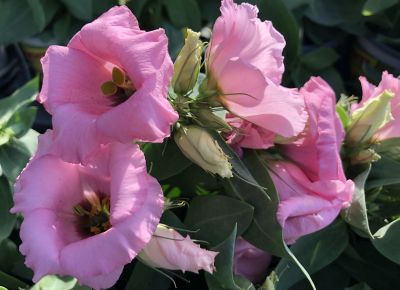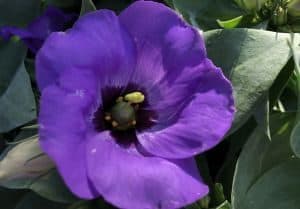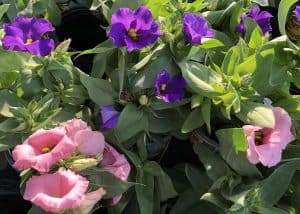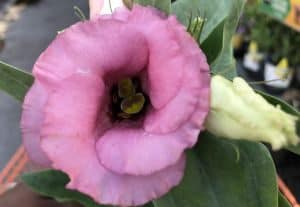
Lisianthus
Also known as Texas bluebell, Lisianthus is native to the south or warm areas and found in grasslands and ditches in some western states. This plant grows as a dwarf variety of 2 inches and up to 3 feet tall varieties. Some varieties may need to be staked to keep from flopping over. Used in floral arrangements, the elegant flowers are popular in wedding bouquets and work well in pots and in the landscape.
Lisianthus have bluish green leaves with funnel or bell-shaped flowers that are yellow inside close to the base of the petals. The flowers are up to 2 inches. They come in a variety of colors, purple, pink, white, blue some are bi-color and occasionally come in yellow or carmine-red. There are double varieties as well as the singles. Lisianthus prefers full sun to part sun, Plant in well drained soils with a pH of 6.5 to 7.0. They are drought tolerant but if over watered will develop disease and rot if too wet.
Lisianthus blooms in early summer and throughout the summer. They are good cut flowers that last for up to 2 weeks or longer in a vase. Flowers have to be slightly open for best results to thrive. Eustoma russellianum is popular for cut flowers.
Grow Lisianthus or Texas bluebell from seed in Autumn or Winter. Fall seedings are reported to flowers sooner during the next season. Sow on top of the soil as the seeds are very small and take a long time to germinate. Collect the seeds when they turn black. This plant is highly resistant to deer. Some other varieties; Lisianthus nigrecense gets to 6ft and prefers sun or shade. Likes our soil and produces clusters of 2 in purple/black flowers. Lisianthus grandiflorum, don’t like our humidity but do well in our summer heat. Grow as an annual but will occasionally return for a second year.
By Karen Blackburn



